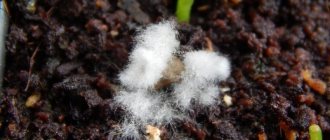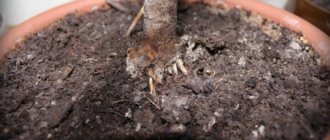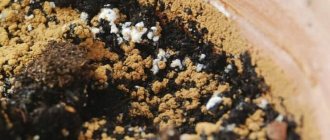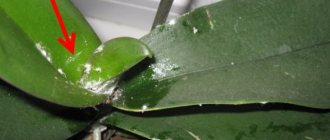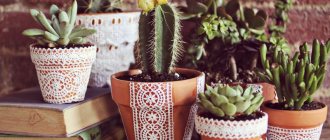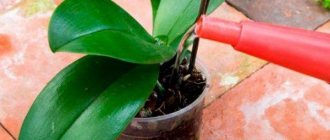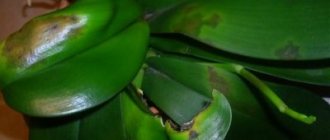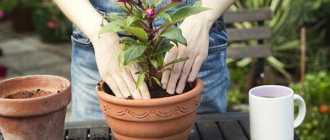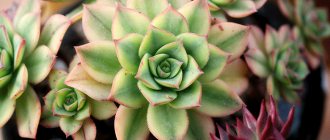In the autumn, when the apartment becomes cool and air humidity rises, a coating often forms on the soil in flower pots. Amateur flower growers may not attach any importance to this. But in vain, because the consequences can be critical.
The plant becomes infected with a fungal infection, because white or gray plaque is nothing more than mold. In flower pots it comes in two types: white and black. The latter, by the way, is dangerous not only for plants, but also for humans, because it can cause a severe allergic reaction leading to breathing problems.
White mold (Mucor)
Mold fungi grow and multiply on the surface of the soil, food products, and organic waste.
Some Mucor species are capable of causing human disease. And some species are used to produce antibiotics.
White mold on the soil in a pot does not bring any benefit; on the contrary, it can be dangerous. In appearance, it resembles white fluff, gradually filling the soil surface. To the touch, the structure is soft, easily crushed with your fingers.
It negatively affects the well-being of people and plants. Mucor will not cause any significant harm to most healthy people. But during sporulation, microscopic fungal spores entering the respiratory tract can cause an allergic reaction.
It is not so much the mold itself that harms a house plant, but the conditions under which it develops. It appeared because the rules for keeping flowers were violated.
Favorable conditions for spore germination, such as high humidity at low temperatures, heavy soils, negatively affect the development of crops. Therefore, the appearance of Mucor is not the cause of the depressed state of the plant, but a result that signals a deterioration in conditions.
Methods of disposal
In order to eliminate fungus in flower pots, the following measures must be taken:
- Replace the top layer of soil, approximately 2 - 3 cm deep, with fresh soil of a lighter structure.
- Reduce the number of waterings.
- Prevent water stagnation.
- Provide drainage.
- Loosening will saturate the soil with oxygen.
- Antifungal drugs - fungicides. For medicinal as well as preventive purposes, the ground is periodically watered with a solution of Fitosporin. It is absolutely safe, as it is a remedy for mold of biological origin.
Slime mold mushrooms
Slime mold mushroom.
This is a separate group of organisms that are close to mushrooms, but are not them. The yellow color is the representative of Fuligo putrefactive. This species is inedible and does not pose any harm or danger to beneficial plants. It grows and develops on rotten parts of plants.
This species is rarely found indoors. Only in the case when indoor flowers or seedlings were planted in soil collected in the garden or on the plot, the slime mold can get into the soil indoors.
Soluble salts - efflorescence
Any water used for irrigation contains soluble salts. Their concentration varies: hard or well water contains a large amount of salts. The smallest amount of elements contains rain, melt, and so-called “soft” water. Depending on the microelements present, the color of the efflorescence will differ: calcium salts will give a white tint, and if there is an excess of iron, the soil on top will be yellow or brown.
This phenomenon most often affects heavy soils with poor drainage and frequent surface watering. When water does not completely wet the earthen ball, soluble salts do not reach the roots well and linger on the surface.
Overly fertilized soil can also cause efflorescence. If microelements do not have time to be absorbed by the flower, they begin to come to the surface.
How to deal with salt deposits
In order to get rid of plaque, eliminate the cause of its appearance:
- Carefully replace the top layer of soil.
- If possible, use soft water: rain or tap water, well settled.
- Reduce the frequency of watering by increasing the volume of liquid so that the earthen ball is completely saturated.
- Ensure good drainage and clear clogged drainage holes.
- Regularly loosen the top layer of soil.
How to distinguish mold from efflorescence
The fungus protrudes a few millimeters above the soil surface, its structure is soft, delicate, and can be easily rubbed between the fingers.
Efflorescence resembles a thin coating that is difficult to separate from the soil and feels rough to the touch.
How to soften water for watering flowers
The easiest way is to collect rainwater. But this option is not suitable for industrial areas, since raindrops will collect dust and chemical elements in the air.
- Use well-settled water. For watering, take the top layer, excluding shaking.
- Filtered water. There are special filters for hard water that soften it by retaining calcium salts.
- Melt water. Take regular tap water out into the cold or place it in the freezer. Liquid without salts freezes earlier; complete freezing should not be allowed. Then the unfrozen water is drained and the ice is defrosted. The water prepared in this way will be soft and biologically active – “alive”.
- It is good to use aquarium water for watering. But provided that no drugs or other additives were added to it.
Chemicals
It is recommended to eliminate white plaque (in a neglected state) on the leaves of petunia and other similar plants using special anti-fungal agents.
Spraying is carried out 2-4 times. The interval between them is 7-10 days (depending on the chosen drug).
The most effective drugs:
- Fundazol;
- Amistar Extra; ( 2
ratings, average:
5.00
out of 5)
Often a white or gray film appears in the pots of indoor plants. We are talking about mold or salt formation. Adult crops will not suffer from this phenomenon, but young plants may die. Why does the earth get moldy? How to fix the situation? Read our review.
Folk methods of dealing with various raids
Folk remedies involve the use of safe methods:
- Replanting the plant or replacing the top layer of soil.
- Using a weak solution of potassium permanganate. This method is effective only against mold, since potassium permanganate has fungicidal (antifungal) properties.
All types of molds, efflorescence, moss, appear on dense, poorly drained soils. Improving the soil structure, loosening, and regulated watering will help prevent this problem.
Transplanting a plant
The most effective way to combat infection is to replant the crop. This procedure helps not only get rid of mold, but also eliminate other problems, as well as provide the plant with nutrients, because it has managed to pull out all the minerals from the old soil.
See also: What to do if mold appears in seedlings on the ground
The substrate for transplantation must be selected taking into account all the rules and requirements for a particular flower. It is important to ensure good drainage. To do this, charcoal, broken polystyrene foam or small pebbles are placed at the very bottom of the pots.
After removing the contaminated soil composition, it is recommended to wash and disinfect the pot. The permissible moisture level should also be clarified in advance for a specific crop and not exceed it.
How is rehabilitation after stomach cancer in Israeli clinics?
Since each case of the disease is unique, the rehabilitation strategy, like the therapy strategy, is developed individually for each patient.
Patients diagnosed with stomach cancer, as a rule, need help restoring appetite, as well as general strengthening of the body, which often suffers from cachexia (exhaustion) due to cancer. In case of surgery, pain relief is also required. Another important point is psychological rehabilitation.
Israeli clinics use the Fast Track rehabilitation method. Its basis is intensive rehabilitation within the walls of a medical institution, which allows minimizing the time spent within hospital walls. Therefore, the average rehabilitation course is only 10 to 14 days.
Published in the section
Stomach cancer is a serious and dangerous pathology of the digestive system, for which a special diet must be strictly followed. It is necessary to change approaches to nutrition immediately after identifying the disease. But especially strict adherence to the diet will be required after surgery, especially if there has been partial or complete resection.
Diet is an important auxiliary factor on which the patient’s recovery depends. Failure to follow a diet can significantly worsen your health.
Man-made reasons
Topping the list of the most common mistakes is temperature violation. Each plant in most cases does not tolerate changes in humidity and temperature. That is why, when placing pots on window sills or near the door, you should not be surprised that mold will appear there after a while.
We recommend that you read
Balance is needed everywhere, so seedlings must be placed where the optimum temperature is. For example, a shelf or a special rack for seedlings is suitable for these purposes. The main thing is that it does not stand in the way of a draft.
Traces of white mold can appear as a result of increased levels of humidity in the room. In modern apartments you can often find devices that increase the level of air humidity
They must be used with great care. Even if the doctor recommended humidifying the air in the room, this does not mean that plants in pots will like this procedure
Even if a person does not use such devices, an unpleasant plant disease can still appear. It is found in houses with a high level of dampness, for example, if the apartment is located above the basement. Another reason will be dilapidated communications. If the work of the housing office leaves much to be desired, then floriculture should be postponed.
Improper watering and defects in the pot are one of the reasons that attention is paid to only at the last moment. For the normal functioning of seedlings, regular watering and constantly functioning drainage are necessary.
Due to blockage of the drainage channels or their small size, fluid stagnation occurs. From the moment such a defect is formed until traces of mold appear, about 2-4 days pass.
Failure to follow the watering schedule is a mistake made by novice gardeners. Due to biological reasons and their structure, any plant can absorb a strictly certain percentage of liquid. That is why, before starting breeding, you should very carefully study the recommendations regarding a particular plant. A gardener must remember that overwatering is dangerous in all respects. In the best case, traces of mold will appear on the flowerpots, and in the worst case, the plant will die due to rotting of the root system.
Rules for eating for stomach cancer
In order to remove the maximum load from the digestive system and stomach, it is necessary:
- - observe a regimen of frequent meals in strictly dosed, small portions - 5 to 6 times a day;
- — products must have a puree consistency: they must be wiped, ground or crushed in another way;
- - time intervals between meals should be the same;
- - you should not eat excessively hot or, on the contrary, cold food - only warm;
- - dishes must be prepared immediately before consumption in the size of one serving - food cannot be stored;
- - dishes must be boiled or steamed - anything fried is strictly prohibited;
- — plant foods should prevail in the diet;
- - fatty foods are prohibited;
- - salt should be replaced with herbal seasonings.
Published in the section
Chemotherapy refers to the classical methods of treating oncopathologies, including stomach cancer. This technique involves the use of cytostatic drugs. As a rule, it is included in the treatment protocol for stomach cancer as an addition to surgery, but can also be used as monotherapy.
Chemotherapy carried out in Israeli clinics can significantly reduce the growth rate of neoplasia and the spread of cancer cells throughout the body. This technique can be used before surgery (to reduce the mass of the tumor), after surgery (to prevent relapse by destroying remaining cancer cells) or during surgery (HIPEC technique).
Types of chemotherapy in Israeli clinics
In Israeli clinics, systemic chemotherapy and HIPEC are most often used to treat gastric cancer pathologies.
Systemic chemotherapy is the treatment of a cancer patient by introducing cytostatics into the body according to a specific scheme. This can be done through oral medications, injections, pumps, or IVs. Most often, chemotherapy is carried out on an outpatient basis, in cycles repeated every few months (three cycles before surgery, three after surgery). One cycle usually lasts about three weeks.
Oral medications (such as capicetabine) are taken orally in tablet form according to a regimen approved by your doctor. Intravenous infusions are administered through cannulas, a PICC line implant, or a central catheter. Most often, both oral and intravenous administration of cytostatics are involved, since, as a rule, not one drug is prescribed, but a combination of them.

